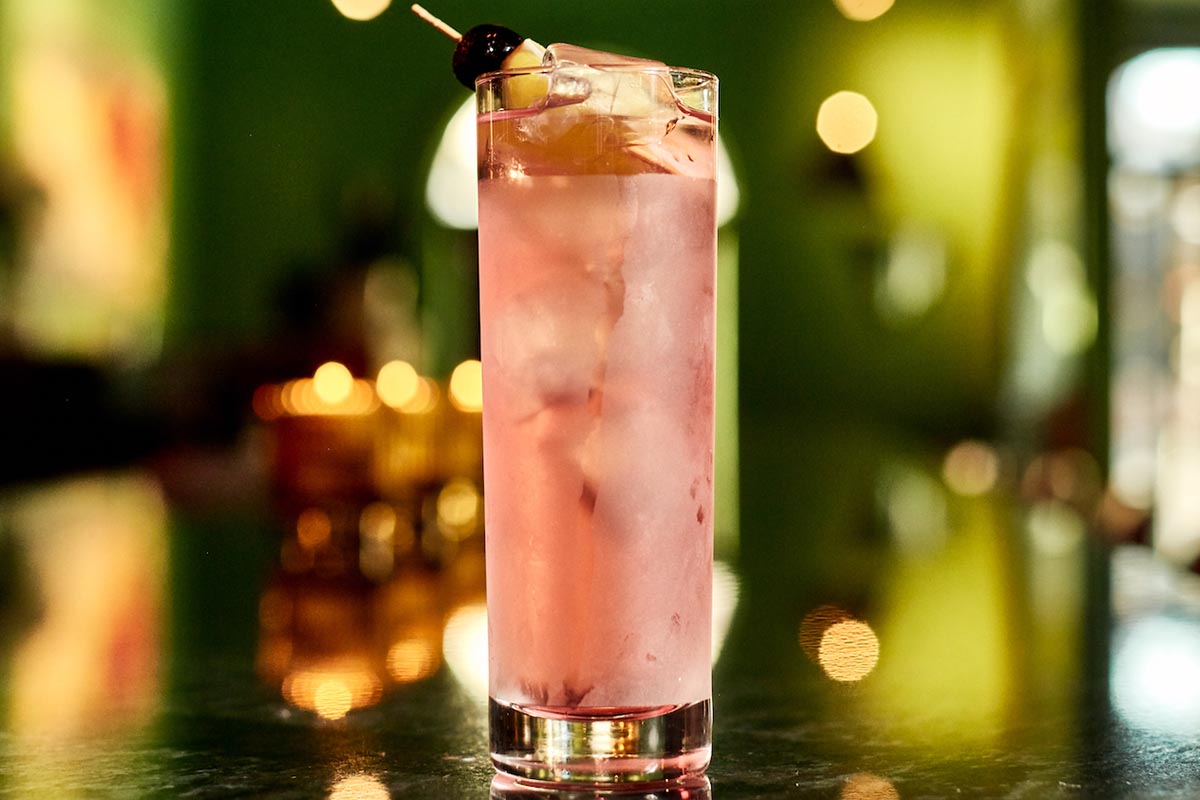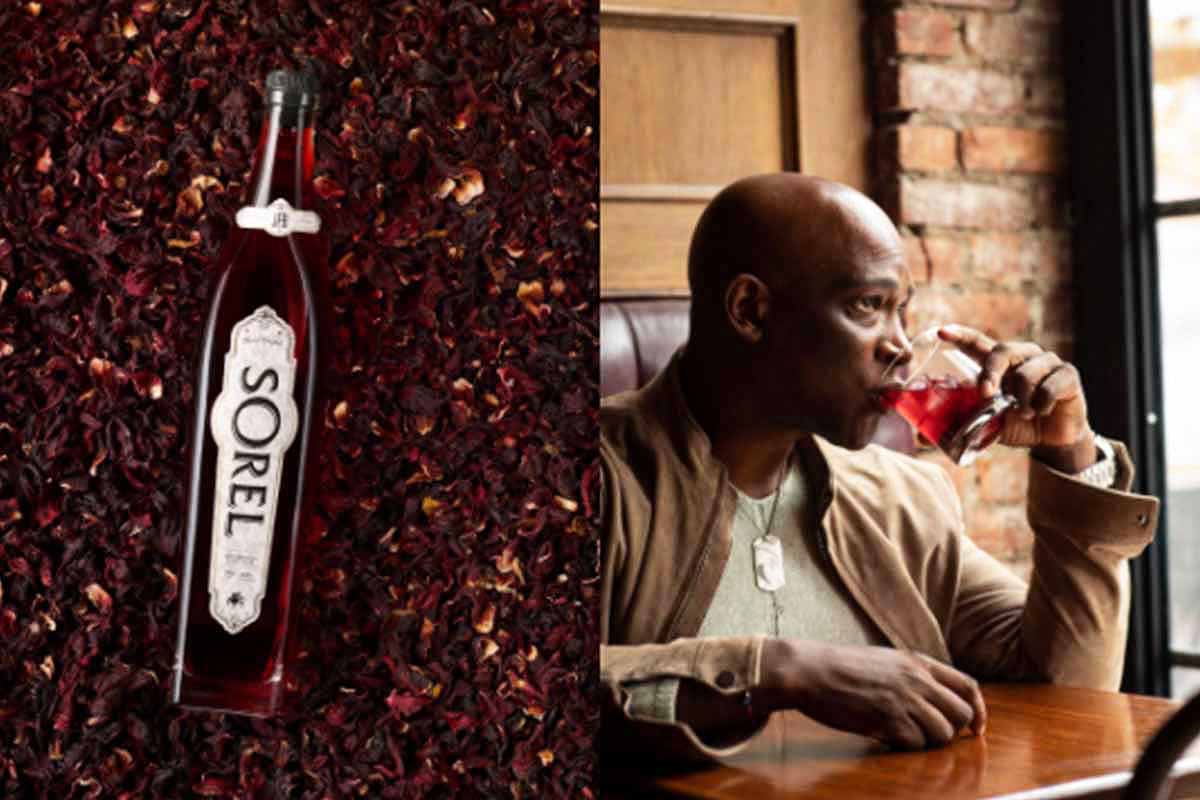Hibiscus is having a moment.
Late last December, the New York Times forecast hibiscus as the “Flavor of the Year,” with writer Kim Severson noting the flowering plant “is adding its crimson hue and tart, earthy flavor to everything from cocktails and sodas to crudos and yogurt.”
That said, hibiscus is not a single entity but a rather varied genus with a wide range of colors and sizes that grows around the world in multiple climates, from temperate to tropical.
I first discovered the wonders of hibiscus in cocktails last year during a Zoom tasting, where a hibiscus-tea infused tequila greatly elevated a simple Tommy’s Margarita. While it’s still a novel ingredient in the drinks world, I have started to see it pop up on cocktail menus with some frequency.
One bartender proponent of hibiscus is Chase Bracamontes, the beverage director and partner at Chicago’s Chef’s Special Cocktail Bar, where she uses hibiscus tea in a selection of light and bright drinks (as well as the base of a housemade grenadine), as well as in variations of the house Old Fashioned and a Hot Toddy.

The Big Shirley from Chicago’s Chef’s Special Cocktail Bar
Chef’s Special Cocktail Bar
“Hibiscus rules because it’s fresh, floral and offers an inherent tartness that sits a bit softer than the acidity of citrus,” as Bracamontes tells us. “Also, it goes well with literally every spirit — we’ve used it with gin, tequila and whiskey. It works well for drinks where you’d like less sweetness but don’t want to use citrus.”
In fact, her only concern with using hibiscus is more visual: “It is highly pigmented, so no all-white yacht party if you’re prepping with it,” she suggests.
As for prep? The Chef’s Special team uses hibiscus as a base for homemade grenadine (which also features orange peel and cherry), which serves as a replacement for Demerara sugar in their Old Fashioned. That grenadine also adds flavor and color to a grown-up Shirley Temple (pictured) called the Big Shirley, which shows off the ingredient’s versatility: The drink is simply a mix of your spirit of choice, plus the aforementioned grenadine and Sprite. Crave something warmer? Their Hot Toddy is fueled by a hibiscus tea called Mallorca Melon from Rare Tea Cellars.

A Hibiscus Spritz at Charleston’s Basic Kitchen
Basic Kitchen
Jordan Moton, the beverage director at Charleston, SC’s Basic Kitchen, recently created a spring-themed libation called the Hibiscus Spritz, made with gin, lemon, hibiscus syrup and sparkling wine. “Hibiscus adds a beautiful deep crimson color to cocktails, as well as a tart, red-berry flavor and some floral notes,” as Moton tells InsideHook.
At Basic, their method of hibiscus prep is a syrup — basically, you steep the flowers in a mixture of sugar and water (the more steeping, the more intense the flavor and color, but over-steeping can give it a “copper-like taste”). Moton also touts the plant’s versatility, with one caveat. “It has a unique flavor, but I’d keep it away from overly smoky spirits like certain Scotches, which would overpower the floral notes,” Moton says.

El Pavo Real, a hibiscus drink from the Peacock Room in New Orleans
Giant Noise
While adaptability is a key selling point for hibiscus, I really think it shines in tequila-based drinks. So I asked Jordan Deis, the bar supervisor at the Peacock Room in New Orleans’s Kimpton Hotel Fontenot, about their El Pavo Real, which uses Patron, Ancho Reyes, hibiscus and pomegranate to create something floral, fruity, smoky and boozy.
“Hibiscus adds some tart tannins and subtle floral notes to your drink,” says Deis, who infuses dried hibiscus into syrups and liquors by cold steeping for an hour or two. For the El Pavo Real, hibiscus was infused into a pomegranate and allspice syrup. “The floral notes of the hibiscus highlight the pomegranate and round out the heat of the ancho chili,” as Deis notes.
El Pavo Real
- 2 oz Blanco Tequila (Peacock Room is currently using Patron Silver)
- .25 oz Ancho Reyes Liqueur
- .75 oz fresh lime juice
- .75oz hibiscus & pomegranate Syrup
- 2 dashes Angostura Bitters
Shake with ice, strain over fresh ice into a rocks glass. Garnish with an edible flower.

A bottle of Sorel and company founder Jackie Summers
Sorel
If you don’t want to use hibiscus tea or infuse a syrup or liquor, there is an excellent shortcut: Sorel is a hibiscus liqueur based on sorrel, a drink that dates back to the 1600s when hibiscus flowers were first imported to the New World from West Africa and hibiscus-based beverages became a Caribbean tradition. Sorel (the bottled drink) is made with Moroccan hibiscus blended with Brazilian clove, Indonesian cassia and Nigerian ginger.
Sorel founder Jackie Summers is a former corporate executive who left his 25-year career to launch a micro-distillery, Jack from Brooklyn, in 2012; it was the first known Black-owned distillery in America. The brand just recently relaunched following an investment from the Uncle Nearest Venture Fund, a $50 million fund created to invest in BIPOC and women-owned spirit brands.
“Every island in the Caribbean makes a different version of sorrel based on what spice was traded at their ports,” as Summers tells us (and it’s not always alcoholic, but Summers notes, “My grandparents are from Barbados, so there’s rum in everything.”)
Sorrel was always a part of Summers’ life, starting with copious amounts of the (non-alcoholic) drink he consumed at the annual West Indian Day Parade. “It’s always in my kitchen, but there’s never been a standardized recipe for this — the people who literally had the knowledge for this weren’t allowed to read or write, so they had to pass down the recipes orally.”
Summers suggests Sorel’s strength — and a hibiscus strength — is how it compliments the flavors of any spirit or ingredient it’s used with. “If you’re making a margarita, it complements the fruit notes,” he says. “In a Manhattan, it’s the woody notes. In a Bee’s Knees, it’s the floral notes.”
The easiest recipe for Sorel, and the best way to experience its unique flavor, might be the Sorel Spritzer: 2 oz of sparkling wine and 1 oz of Sorel, served in a Champagne flute and garnished with an edible hibiscus flower.
Side note: Summers does note that the hibiscus flavors will change based on where the hibiscus originates. “It’s similar to a grape varietal,” he says. “When you have a dry, arid environment, the flower will draw more minerals out of the soil and it’ll be more robust and pungent. If it originates from a tropical area, it’ll have a similar flavor, but it won’t be as punched through.”

Tommy’s Margarita with Santera Tequila
Santera Tequila
As for the drink that piqued my interest in hibiscus? I tracked down Nate Fishman, the national brand ambassador for Santera tequila, who had made that Tommy’s Margarita variation during a Zoom-led mixology class. He, like me, believes tequila is where hibiscus truly shines, particularly if the hibiscus is from the same area. “There is a saying in the wine world, ‘if it grows together, it goes together.’ For example, Rosé wine is from Provence, France, therefore it pairs perfectly with Moules Frites Provençal. In this case, we are using an ingredient that is locally found in Mexico to pair with Santera Tequila, which is of course from Mexico as well. The terroir, or region, where the agave and the hibiscus grow are similar, thus their biochemistry will have natural overlaps.”
Tommy’s Margarita
- 1.5 oz Santera Blanco Tequila infused with hibiscus tea for 2 minutes
- .75 oz agave syrup
- .75 oz lime juice
Add all ingredients to a shaker, add ice, shake and strain into a cocktail glass. Garnish with a lime.
This article was featured in the InsideHook newsletter. Sign up now.
The Best Ingredient for Your Cocktails Is Hibiscus - InsideHook
Read More

No comments:
Post a Comment